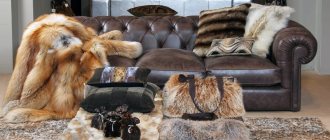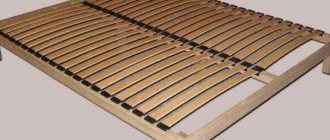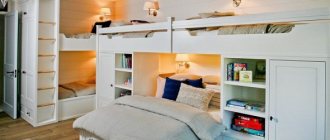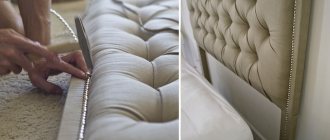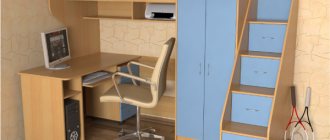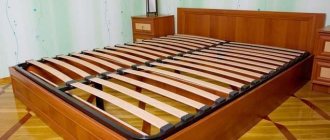How nice it is to sit down on a cold winter evening with a book in an armchair by the fireplace, wrapped in a soft, warm and very cozy blanket. Currently, there is a huge selection of high-quality natural wool blankets. Let's try to figure out what material is best to purchase this product from: camel wool, sheep wool or merino. Such blankets can be used as a bedspread and blanket, and will also become indispensable at a picnic.
What to pay attention to
First, you need to decide what specific requirements apply to this product. Experts advise choosing wool blankets according to the following criteria:
- size;
- compound;
- color;
- drawing.
You can choose any size: there are blankets for newborns, children and adults. They are used as covers for chairs. Despite the wide selection of various modern textiles, natural materials are the most in demand.
Photo gallery
Angry Birds
Sea
Disney princesses
For girl
SpongeBob
Winx Club
NY
Young technician
Cars
Patchwork
Merino wool blanket
Sheep of this breed live in the mountains of Australia, New Zealand, and Spain. To make yarn, we select the highest quality wool from the withers of a sheep. Due to living in cold climates, wool is able to retain heat well and not absorb odors and moisture. Creatine, which is found in animal hair, has bactericidal properties. It is believed that products made from merino wool have the peculiarity of having a therapeutic effect: warming up colds, relieving joint and back pain, reducing blood pressure, and helping with sleep disorders.
According to reviews, the yarn can be dyed quite easily in any color and made into a blanket for every taste.
Made from alpaca wool - “little camel”
These animals live in the highlands of South America, in even harsher conditions than Merino sheep. Alpaca wool is thin, smooth, and does not contain lanolin. A blanket made from the wool of this animal can retain heat 7 times more efficiently. In addition, it is 3 times lighter than merino wool. Due to the absence of lanolin, the risk of allergies is significantly reduced, which means that such products can be used for newborns and allergy sufferers can use them. Such blankets are able to maintain optimal body temperature in both winter and summer. According to consumer reviews, products made from alpaca wool are quite expensive, but they are quite durable and retain their good appearance and useful qualities for a long time.
Baby blanket size
Children's bedspreads have a fairly wide range of sizes - from small capes 100x150, 110x140 to one-and-a-half-size bedspreads 160x220/230 and almost full double bedspreads - 180x240 centimeters.
Read also: How to make a blanket from scraps
The product should completely cover the bed linen and hang down a little, but not drag along the floor.
If you choose a children's bedspread for a bed with a backrest, then the length should match the length of the bed + 10 centimeters; if the bed is without a backrest, add about 25 centimeters to the length of the bed.
How to care for merino and alpaca blankets
Such blankets can be washed by hand, as well as in a washing machine, for this you should use the gentle wash mode. The water temperature cannot exceed +35°C. Do not use aggressive powders or bleaches for washing. It is recommended to wash blankets separately from other items. If a stain appears on the rug, it should be washed immediately using warm water and any soap. Despite the high price of these products, it makes sense to buy them: with proper care, they can last for decades.
Chunky knit wool blanket
Among knitting enthusiasts, products knitted with large knitting arouse genuine interest. This product can be purchased in a store, or you can knit it yourself. For knitting, they take special, large-sized knitting needles, improvised materials (for example, PVC pipes) are also suitable, and what’s most interesting is that instead of knitting needles, they use their own hands, in the literal sense - they knit with their hands, on their wrists.
In order to knit a large knitted merino wool blanket, you need to take 3 kg of very thick yarn. It is enough for a product 150X180 centimeters.
Which is better
Which blankets should you give preference to if there is so much choice? Transformers can be especially convenient for newborns. Such a product will serve as an envelope for walking and act as a blanket, that is, we have a “two in one” option.
For the manufacture of the inside of the transformer, the following are usually used:
All these materials are soft, they “breathe”, and are easy to care for.
The outer side is made of:
Also, filler is usually used in transformers. This:
You can convert such a blanket into an envelope using:
Thanks to the special pocket found in transformers, you can keep your child’s legs closed, while he will move his arms freely.
There are no words, the transformer has many advantages, but other types of blankets deserve attention:
Knitted
A mother or one of her relatives can knit a blanket for a newborn. An alternative is to order the product from craftswomen or buy it in a store. Wool is usually used in combination with acrylic (synthetics). If the newborn suffers from allergies, it is better to choose pure acrylic, which is easy to wash and keep clean.
Blankets for discharge from the maternity hospital are particularly elegant. Lace, frills, embroidery, and braid are used for decoration. At the same time, young parents forget about practicality. Some families buy such a product literally for one time. Still, it is better to choose a more functional model.
For infants, a summer blanket used during walks will protect the baby from overheating. It is often knitted from cotton threads and made of thin but durable fabric.
The blanket that parents will put in the crib should have good air permeability. After all, a newborn, moving in his sleep, can pull it over his face.
Parents need to make sure that the blanket is soft, does not prick, and does not cause any unpleasant sensations in the newborn.
It should also allow moisture to pass through well so that the baby’s delicate skin does not dry out. It is undesirable for the decoration to contain small decorative elements - buttons, bows, etc. that a newborn can tear off and put in his mouth.
Features of caring for a blanket knitted with large knitting
If small dirt appears on the surface of the blanket, you can clean it with a dry brush. It is recommended to wash such products by hand. The temperature of the water intended for washing should not exceed +30°C. Special liquid products containing lanolin are added to it. During washing, mechanical movements should not be used, namely: the products should not be twisted or rubbed. The blanket can be lightly squeezed to remove excess water. It should be dried only in a horizontal position, spreading the product on a flat surface. If the blanket is heavily soiled, it is better to entrust it to specialists - take it to the dry cleaner.
Camel wool
Blankets made from camel wool are especially popular in Russia; the most valuable wool comes from camels aged 1 to 3 years. A camel wool blanket is light, thin, very soft and warm, and has the ability to quickly warm the body, thanks to 100% natural wool. Currently, camel wool blankets are made in different colors, which does not leave consumers indifferent. A distinctive feature of these products is that they are double-sided.
Camel wool blankets have a number of features and advantages over others:
- have healing properties;
- hygroscopic;
- do not cause allergic reactions;
- maintain body temperature balance;
- in hot weather they protect from overheating, in cold weather from hypothermia;
- relieve static tension.
When buying a blanket, you need to pay attention to the composition, cost, color. Blankets made from camel wool have a fairly high price.
Children's blanket
To create a baby blanket with your own hands, you should be especially careful when choosing yarn. First of all, it must be hypoallergenic. This means that if you do not know for sure whether your baby is allergic to wool, then it is better to avoid this component in the yarn. In addition, the wool is itchy - also not the best option for a child, especially a very young one. For a lightweight blanket, it is better to choose cotton yarn. You should avoid yarn that is too fluffy, as particles of lint and fluff may end up on the child’s body and face.
Knitting a blanket with knitting needles is not an easy undertaking; it requires painstaking work and perseverance. But if you can handle it, you will become the owner of a unique, beautiful and very practical thing.
This article is intended for persons over 18 years of age
Have you already turned 18?
What do you need to know if you decide to knit a blanket?
A blanket is a wonderful thing, both from a practical and aesthetic point of view. It’s always nice to lie down on damp autumn or frosty winter evenings, wrapped in a warm blanket. Especially if he is tied with his own hands or the hands of a loved one.
As a decorative element, a well-knitted blanket also looks chic. And almost every housewife sooner or later has the idea of knitting it herself. A full size for yourself or a small one for your beloved daughter’s doll.
Let's figure out what we need to have to get this beautiful and cozy item.
We will need:
- knitting needles, diameter depends on what product we want to knit;
- high-quality strong threads;
- basic knitting skills;
- free time and patience.
Naturally, the speed of knitting depends on your skills. With a well-positioned hand, everything will go relatively quickly. But for beginners it is better not to rush and do everything thoughtfully and carefully.
Preparing for
knitting:
- We decide on the color and dimensions of the product. If you are not going to store your work in the closet and use it exclusively as a blanket, then it is worth considering how the blanket fits with the interior of the room. It’s good when the work of your hands matches the color of the curtains, furniture and carpet. But you shouldn’t take the same color. The product should not merge with the interior and lose its individuality.
- We select the material.
- Choosing a knitting pattern and method.
You can knit either as a whole blanket or in separate pieces - the so-called motifs. The latter option is more convenient, since you don’t have to carry a huge and inconvenient wad of thread. You simply make small squares and then connect them together in the finale. There are no problems finding knitting patterns now.
On the Internet it is easy to find light or dark plaid options, described step by step and even a description of the process in the form of a video lesson.
Before work, you should definitely pay attention to how to tie the edge. This is not necessary, but a properly tied edge significantly increases the durability of the product. In addition, the binding, if done correctly and carefully, will make the craft not only warm, but also incredibly beautiful. And the skills acquired in the process will be useful if you decide to knit a hat.
How to knit a blanket with large knitting needles?
Bedspreads made from thick yarn have become a hit this summer. Perhaps this is not the most practical product in everyday life, but it is definitely an excellent fashion solution from an interior point of view.
For knitting, it is best to use tops. An alternative name is combed tape.
Advantages:
- can be knitted either with knitting needles or simply by hand;
- the product turns out soft, airy and quite light;
- the rawness of the wool adds stylish charm.
True, there are also
disadvantages, especially painful for beginners:
- combed tape is not a finished yarn, so it breaks quite easily during operation;
- untreated wool coughs up a lot, loses its shape and breaks into fibers during knitting;
- products made from tops cannot be washed, and cleaning them with chemicals is very problematic.
If all these factors do not suit you or you doubt your skills, then it is better to pay attention to spun wool:
- after wet-heat treatment, maintains a constant shape of the product;
- practically does not tear, also does not disintegrate into fibers and does not fluff;
- Can be gently hand washed in slightly warm water.
There are only two disadvantages:
slight matting during use and if the item is large in size, then it must be cleaned strictly by dry cleaning.
For knitting, in addition to the material, you will have to look for especially thick knitting needles. It is better to look in specialized stores.
How can beginners knit a blanket using square knitting needles?
For a beginning needlewoman, the method of knitting from squares is the most optimal. It has the following advantages compared to knitting a whole blanket with one fabric:
- simplicity - knitting a small convenient square is much easier than a hefty, clumsy sheet;
- insurance against errors - if you spoil the workpiece, you can easily and calmly unravel it or throw it away altogether and start over, but screwing up a whole canvas is quite unpleasant;
- mobility - you can easily throw knitting into your purse and knit anywhere in your free moment: at work during a break, at a movie show;
- flight for creativity - you can easily use any knitting patterns or different materials for each square and not be tormented by the question of how to coordinate the pattern of the square with the overall pattern of the blanket, but in a one-piece blanket you will have to adhere to strictly defined initially patterns, and not take a step to the side.
Knitting in squares is a great way to practice different styles and end up with a gorgeous knitted blanket.
What patterns are needed to knit a blanket?
Description of several simple popular schemes:
- fringed plaids;
- plaid with a heart;
- plaid fragments.
To understand how to knit, it is best for beginners to watch master classes, where they will explain and show the knitting methods of each pattern step by step. It will not be difficult for more experienced needlewomen to understand the descriptions of the circuits using dry numbers.
How to knit a blanket for a newborn: patterns
Handmade work has always been especially valued. Each handmade product bears a uniqueness mark. Even if the master does everything according to the same scheme, each work has its own exceptional features. Therefore, knitting a baby blanket for a baby who has just been born is a great idea.
As a rule, the primary colors are traditional:
- pink for girls;
- blue for a boy.
When starting to knit a blanket for a child, remember that the blanket should not only be beautiful, but also be pleasant to the baby’s delicate skin. Therefore, it is important to think about what yarn the product will be made of.
Most often knitted from plush yarn. It is soft, fluffy and pleasant to the skin. Excellent for patterns with large knitting. If you try hard, you can knit a great themed gift. For example, analogues of jacquard. More classic beautiful schemes are also popular:
- blanket with hearts;
- in the form of a mermaid or Winnie the Pooh;
- two-color options.
With such a gift you can safely leave the hospital.
How to knit a blanket with knitting needles from leftover yarn?
It happens that there are a lot of leftover yarn accumulated at home. And it’s a shame to throw it away, and it’s unclear what to do with it. If you use knitting motifs, then it’s quite possible to use everything on a blanket. You don’t even have to worry about what yarn to knit from. Variation in materials will not be a problem. By beautifully arranging the sectors, you can get an excellent visual assortment: here is a square of plush yarn, around there are squares of “grass”, and everything is tied with a woolen thread. Or if all the yarn is the same type, but different colors, you can knit an excellent double-sided woolen blanket.
Knitting a blanket for the sofa
Dimensions of the furniture blanket:
- on the sofa - 140x200cm;
- on the bed - 270x270cm;
- per chair—112×168.
Dimensions are approximate and may vary depending on the furniture model.
How to knit a blanket with braids?
Blankets with braids have several advantages:
- the complexity of the scheme can vary from very simple to the level of extra-class masters;
- volume of the drawing;
- the strength of the product as a whole.
From
the simplest options for beginners, you can make such a bedspread:
- We braid: 4 rows, weave the braid and another 4 rows and weave again.
- Then 6 knit stitches and the same number of purl stitches for the space between the braids.
The drawing is simple, but voluminous and looks great. If you take red (blue) and white yarn, you will immediately get Christmas motifs. For beginners, cable knitting will be somewhat difficult, since this style is not very suitable for patchwork projects. You will have to knit a whole blanket. But once you get the hang of it, you can make a mermaid tail and a pattern with a voluminous bunny.
How to knit a large blanket with knitting needles without seams?
One of the highest levels of skill is knitting a blanket without seams. Such a blanket will have to be knitted very carefully and carefully. Any mistake will lead to large volumes of corrections.
These blankets are knitted in a single color scheme for adults. Seamless knitting is durable. This blanket is perfect for its intended purpose - to keep you warm during the cold season. The colors most often chosen are soothing: white, turquoise, gray.
10.25.2017 23 541 0 Igor
Skillful hands
Plaid is a very popular product, the interest in which increases significantly in the autumn-winter period. Classic “checkered” options are no longer relevant for a long time. Volume, softness and naturalness of the material are in fashion. Therefore, a large knit merino blanket has become a real hit for home comfort and stylish photographs. The main objectives of this product are to decorate the interior and provide its owners with warmth and softness.
Content:
The most affordable blanket
Sheep wool is the most popular and affordable; a large number of things are knitted from it. This raw material is obtained by shearing sheep. A sheep wool blanket is lightweight, very warm, environmentally friendly and inexpensive. The quality of wool depends on the following indicators: the breed of sheep (fine wool, coarse wool, semi-fine wool), in what conditions the animals are kept. The quality of the material is also affected by diet, gender, health status, age of the sheep, as well as climate. The best wool is considered to be the one that is cut from the chest of the animal. Let us dwell in more detail on the advantages and disadvantages of a blanket made from sheep wool.
Advantages:
- environmental friendliness;
- hygroscopicity;
- medicinal properties;
- airtightness;
- wear resistance;
- thermoregulatory properties;
- dirt-repellent properties.
Flaws:
- lanolin contained in wool can cause allergies;
- susceptible to moths;
- Products made from low quality raw materials are rough to the touch.
Sheep wool blankets come in a variety of sizes and densities.
Care instructions
Hand and machine washable. Machine washable only on delicate cycle, permissible water temperature +30°C. Wash using special wool products containing lanolin. It is recommended to wring out with caution, without pulling or twisting the product; do not use a machine wringer. Dry horizontally in a well-ventilated area. Once every 2-3 months the blanket should be taken outside for airing, protected from direct sunlight. Store the product in cotton bags with moth repellent in them. According to consumer reviews, such a blanket can warm you up on a frosty winter evening and become indispensable on a trip to nature. The relatively low price, which does not at all affect the quality of the product, will not leave you indifferent.
Blanket knitted or crocheted
Knitted blankets look very impressive. Such a product can be purchased from craftsmen, or even better, knitted yourself, choosing a pattern to your liking. Good quality knitted blankets are made from wool with the addition of acrylic. If you knit items from inexpensive threads, the blanket will very quickly lose its presentation. The product can be made by knitting or crocheting. You can knit a blanket either as a whole fabric or in parts, which then need to be sewn together.
To create a blanket 166X172 cm you will need 2.2 kilograms of yarn (equal parts wool and acrylic). For knitting, you can choose any style, including classic or patchwork. They use different knitting techniques: relief, double, zig-zag. A very interesting modern technique for knitting blankets is intarsia (multi-color knitting). You can knit an original blanket from all the leftover yarn you have at home.
Knitted and crocheted blanket
You can knit and crochet a lot of things.
The hook gives more opportunities for creativity: it can be used to create a wide variety of patterns and options. With the help of a hook it is easier to move from motif to motif if we are talking about a large solid blanket (not knitted in fragments).
Crocheted blanket. Photo: pinme.ru
Crochet blanket from granny squares. Photo: yandex.by
Crochet openwork blanket. Photo: livemaster.ru
Knitting needles in knitting a blanket can be used both circular and regular (pair). In the latter case, the blanket will consist of several squares that are sewn together. Their pattern and color may not match - then the product comes out in a patchwork style.
The simplest knitting is garter stitch. However, you should not use only this one - the edges of the blanket will bend. It’s convenient to knit a blanket with Canadian elastic: the stitches are easy to count, and if you lose count, it’s immediately obvious. Rib knitting is elastic and wear-resistant (it is used for knitting cuffs and the bottom of sweaters, etc.). Advanced knitters will have no difficulty knitting a blanket with braids and other embossed designs. Of course, it is worth mentioning that they will require more yarn than simple knitted blankets - but what a result! It is preferable to use a knit that will look good on both sides, because the underside of the blanket will be visible.
Knitted blanket. Photo: mywishlist.ru
Blanket made of knitted squares. Photo: yandex.ru
Knitted blanket. Photo: tekstilprofi.com
If you are still new to knitting and are afraid of not guessing the width of the future blanket, initially make a small test sample. Cast on twenty loops and knit several rows along with fragments of the pattern (if one is planned), then measure the resulting number of centimeters in width of the sample and calculate how many loops you need to cast on to get a blanket of the desired size.
The standard size of a blanket is 1.5 x 2 m. As a guide, this blanket is suitable for a single bed. A smaller blanket (size 1.3 x 1.7 m) will cover the chair well. On average, it will take about 1.5-2 kg of yarn to make a product (depending on the type of yarn, patterns and size of the blanket). In any case, it is better to buy yarn with a reserve, since there is always a risk of making a mistake in the calculations. And the remaining balls will always find a use!
As for the composition of the yarn, it is better to focus on “breathable” options - those from which your skin will not have to sweat, namely, those containing natural ingredients, for example, cotton, wool. Blankets made from yarn with wool will keep you warm in the cold winter. Cotton models are light, soft, do not irritate the skin, and are perfectly breathable - an ideal summer option. By the way, cotton yarn is perfect for crocheting. For beginner knitters, mohair can be a real salvation: the fluffy thread helps hide traces of unevenness and mistakes in knitting. You can choose a mixture of angora and acrylic. If you want to give your interior a special twist, choose the option from ““. Such blankets are not only very original, but also soft and pleasant to the touch.
